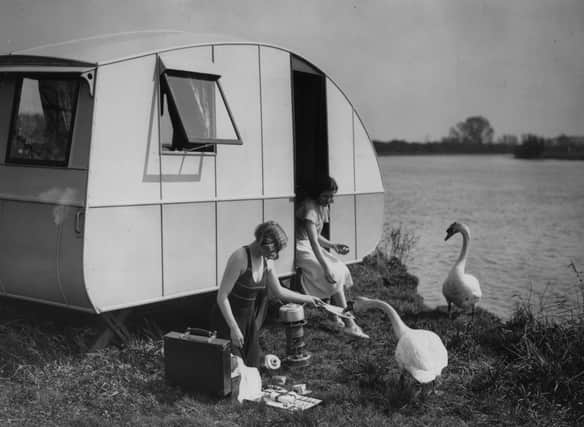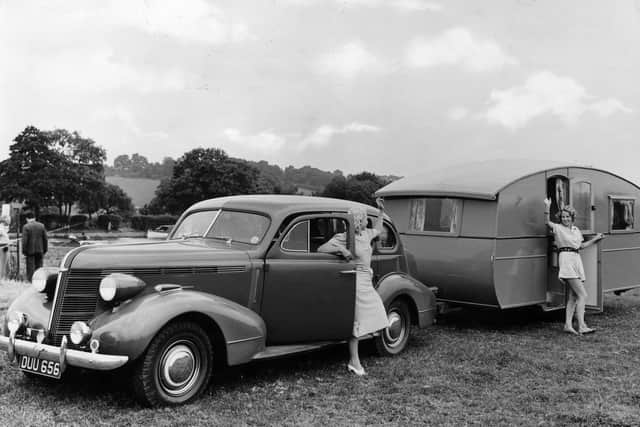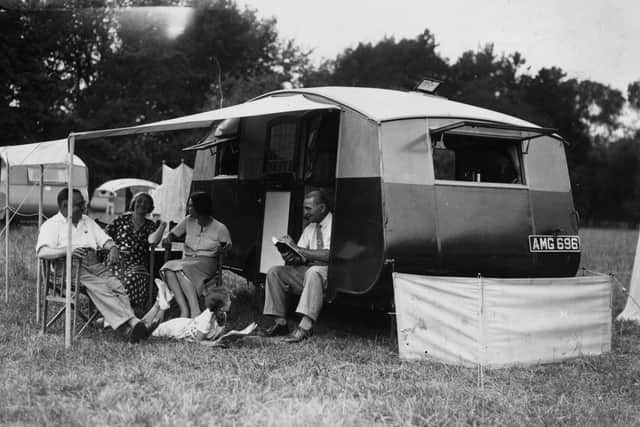Pictures that recall the golden age of caravanning


The world’s oldest caravan is considered to be the Wanderer, a luxury affair made of mahogany and maple by Dr William Staples in 1885 and equipped with a bookcase, china cabinet and a piano. But it was horse-drawn and owed more to the covered wagons of the American west than to caravans as we know them.
Holidays on wheels began in earnest in 1919 with the Eccles, a caravan named after a district of Manchester but produced 100 miles away in Birmingham. With small opening windows on the front and sides and with paraffin for heat and light, it looked like a shed on wheels – but once parked it could be extended with awnings, and offered the travelling family all the comforts they could expect from a typical B&B, and more besides.
Advertisement
Hide AdAdvertisement
Hide AdAnd Eccles Motor Transport was not a company to let the grass grow under its feet. In the interwar years it was producing luxury touring models – one of which got as far as the Arctic Circle – and continued to dominate the market until the early 1950s.


That was when the Streamlite Rover – a forerunner to the more famous Sprite – began to find favour. Built of lighter and cheaper materials and divided inside into multiple rooms, it broke free from the old box shape and set the template for every caravan since.
The even larger models that followed came with two axles instead of one, and ushered in what many consider to be the golden age of caravanning. They even had built-in toilets – an en suite luxury not available in many hotels or even houses of the period.
Editor’s note: first and foremost - and rarely have I written down these words with more sincerity - I hope this finds you well.
Advertisement
Hide AdAdvertisement
Hide AdAlmost certainly you are here because you value the quality and the integrity of the journalism produced by The Yorkshire Post’s journalists - almost all of which live alongside you in Yorkshire, spending the wages they earn with Yorkshire businesses - who last year took this title to the industry watchdog’s Most Trusted Newspaper in Britain accolade.


And that is why I must make an urgent request of you: as advertising revenue declines, your support becomes evermore crucial to the maintenance of the journalistic standards expected of The Yorkshire Post. If you can, safely, please buy a paper or take up a subscription. We want to continue to make you proud of Yorkshire’s National Newspaper but we are going to need your help.
Postal subscription copies can be ordered by calling 0330 4030066 or by emailing subscriptions@jpimedia.co.uk. Vouchers, to be exchanged at retail sales outlets - our newsagents need you, too - can be subscribed to by contacting subscriptions on 0330 1235950 or by visiting www.localsubsplus.co.uk where you should select The Yorkshire Post from the list of titles available.
If you want to help right now, download our tablet app from the App / Play Stores. Every contribution you make helps to provide this county with the best regional journalism in the country.
Sincerely. Thank you.
James Mitchinson, Editor
Comment Guidelines
National World encourages reader discussion on our stories. User feedback, insights and back-and-forth exchanges add a rich layer of context to reporting. Please review our Community Guidelines before commenting.